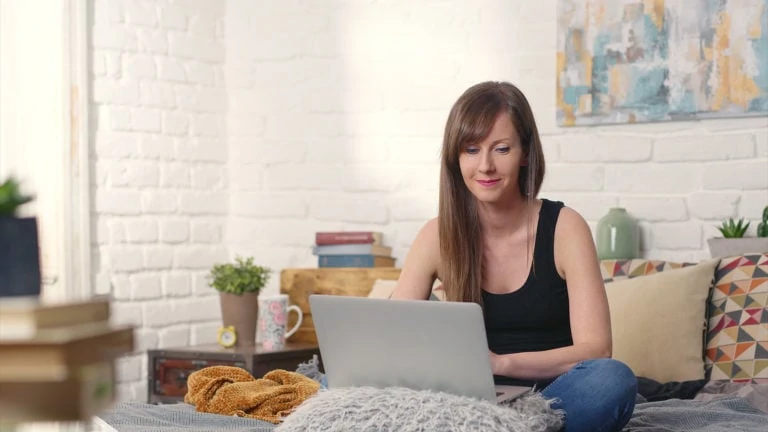The average person in the U.S. is spending over 13 hours a day looking at screens right now—from binge-watching to working from home, our eyes are working overtime. Digital-related eye strain is marked by symptoms that can include dry eyes, blurry vision, watery eyes, or the sensation of having sand on the surface.
Applying these six tips to promote eye health can save your eyes from unnecessary strain while you’re cooped up at home.
Allow your eyes to rest.
Incorporating some well-deserved breaks in your screen viewing can dramatically reduce commonly experienced symptoms. Many people use the 20-20-20 rule as a way to prevent digital eye strain symptoms. The instructions are simple, yet effective:
For every 20 minutes of screen time, look away from your screen, and focus on an object located 20 feet away for a minimum of 20 seconds.
Gazing at an item in the distance gives the tiny muscles in the eye a much-needed break — think of it as the cool-down lap after running a mile.
Just as working on your laptop causes eye strain, so does playing video games and scrolling through your phone. Implementing the 20-20-20 rule with your children can help prepare them for a future full of screen use.
Set up your screen properly.
Make sure you’re looking level or slightly down at a computer screen. If your screen is too high, looking up will make you feel tired and might make your eyes dry out more easily. When you look up, your eyes are more wide open—the upper eyelid opens a little more—so you end up having the lower part of your eye more exposed to the air.
Constantly looking down, on the other hand, can lead to neck strain. Therefore a good contrast is important. Opt for black letters on a white background or the opposite. Don’t sit with a bright window behind you, as this may cause glare on the screen.
Use artificial tears if needed.
Eye drops make you blink when you put them in, and they add moisture. Go for over-the-counter artificial tears, but don’t use the kind that promises to “get the red out.” These contain a medication your eyes may adapt to, causing you to become dependent on them to keep the redness out.
You can use preservative-free artificial tears as often as you like. If you need the drops more than five times a day, consult an eye doctor to figure out if there’s a problem.
Use a hot compress on the eyelid.
Oil glands in the eyelids help lubricate the surface of the eye and keep tears from evaporating. Applying some heat on the eyelid can open up those oil glands and help with dry eye.
Washcloths cool off very quickly, so consider buying a heat mask that can be warmed in the microwave. Make sure the mask is not too hot by testing it on your hand before putting it on your face. It’s a safe way to treat dry eye and it forces you to close your eyes for a few minutes and relax.
Keep the mask on for about five to 10 minutes, or until it doesn’t feel hot anymore.
Switch to warmer screen tones at night.
Smartphone screens emit bright blue light so you can see them even at the sunniest times of the day.
But at night, your brain gets confused by that light, as it mimics the brightness of the sun. This causes the brain to stop producing melatonin, a hormone that gives your body the “time to sleep” cues. Because of this, your smartphone light can disrupt your sleep cycle, making it harder to fall and stay asleep.
Switching your phone to a night shift setting will adjust the display so that it gives off a warmer, less blue light that is easier on your eyes.
See your eye doctor.
For everyone’s health and safety, ophthalmologists and other doctors are being urged to limit contact with patients during the coronavirus pandemic except for urgent or emergency care. Depending on your symptoms, your eye care specialists may recommend a telemedicine visit. Contact us today to inquire about an in-office or virtual visit.
To learn more about dry eye and eye care during quarantine, watch our At-Home Eye Care video series, where our doctors answer some of your most common questions.

